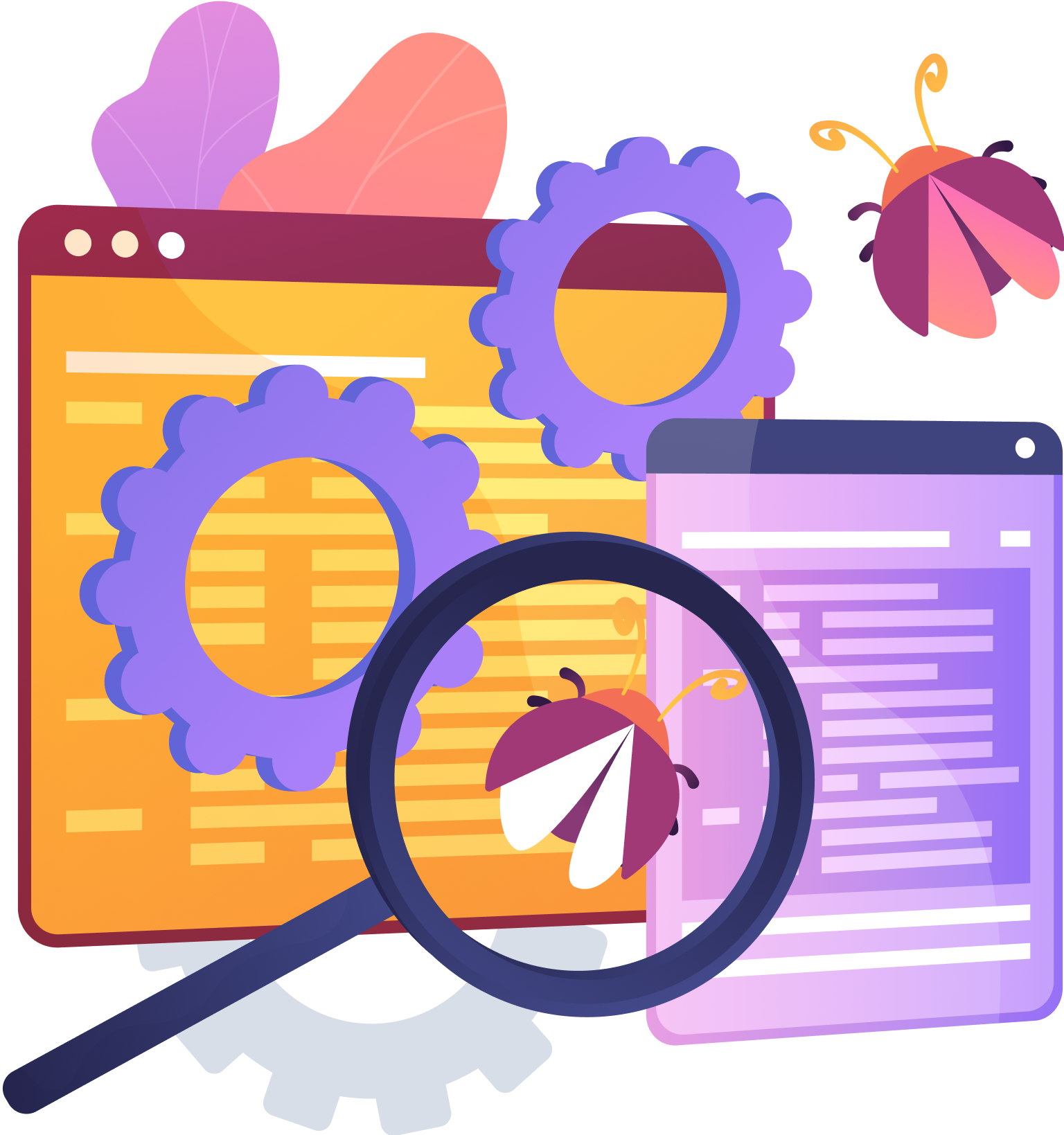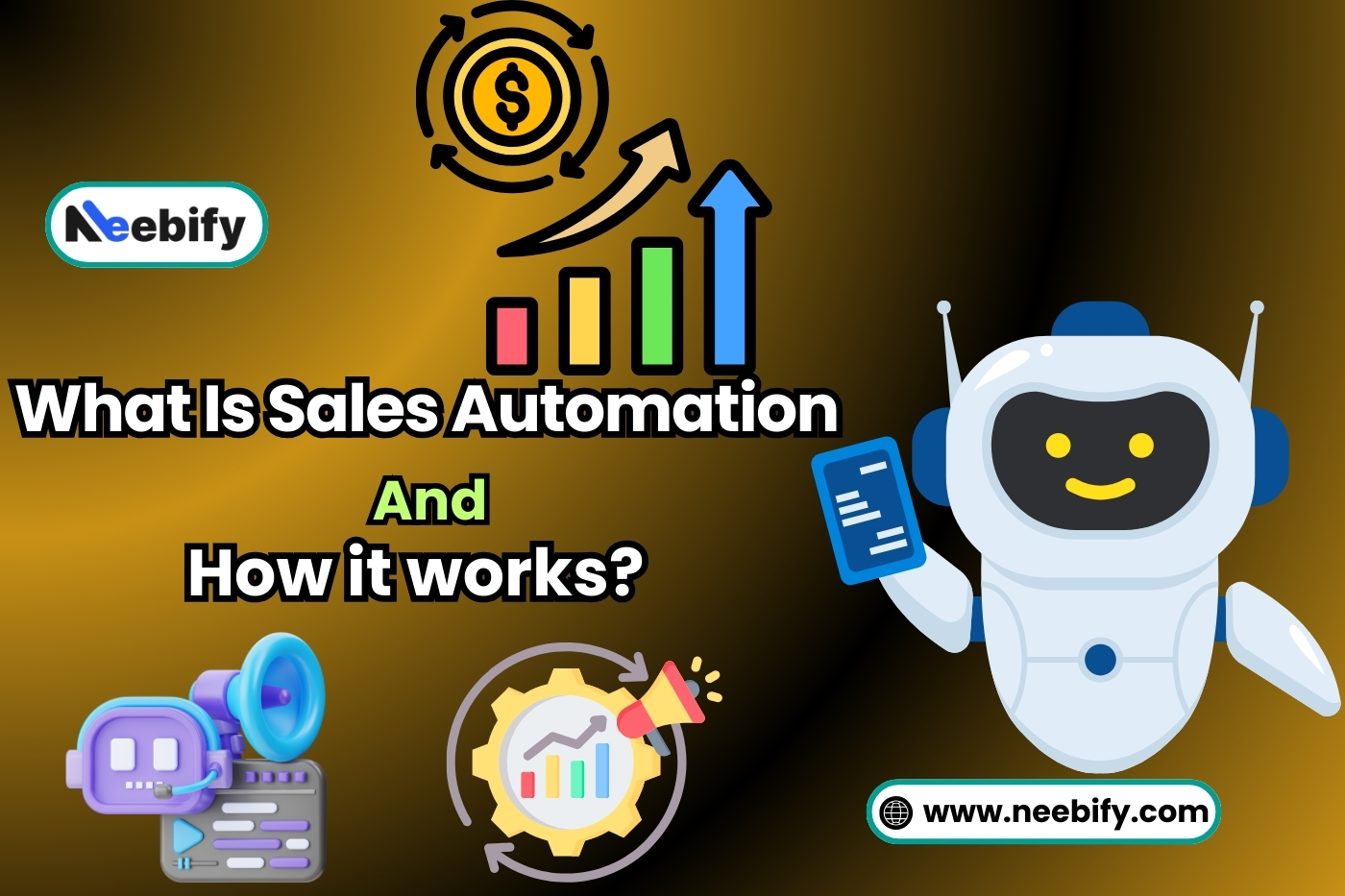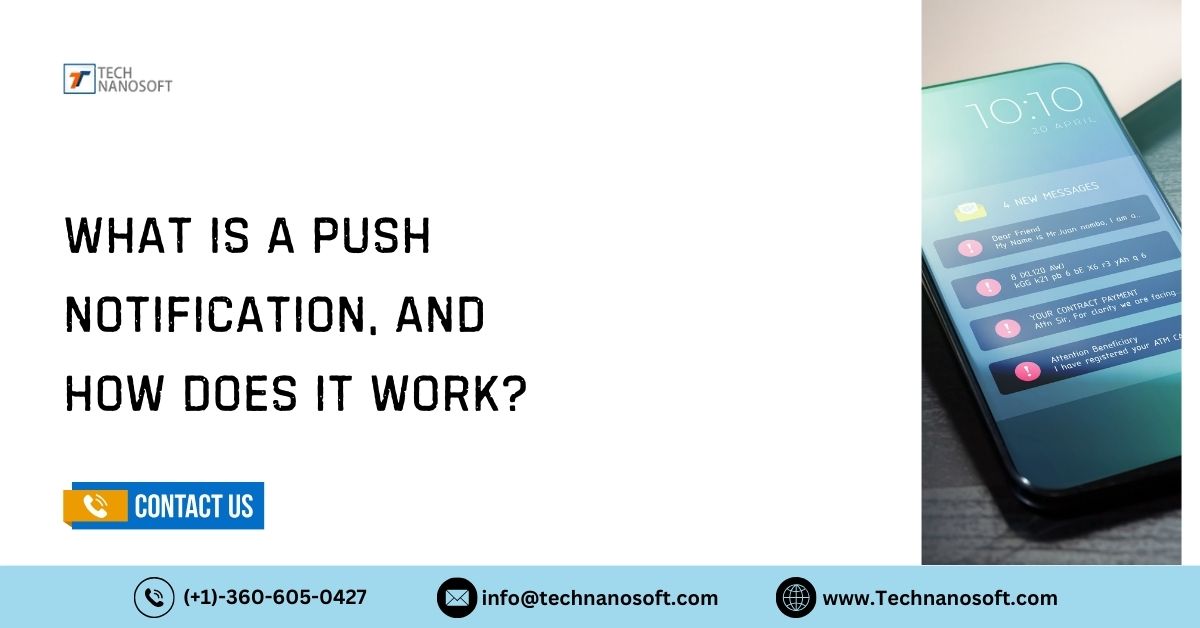What is Web 3.0? A Comprehensive Guide
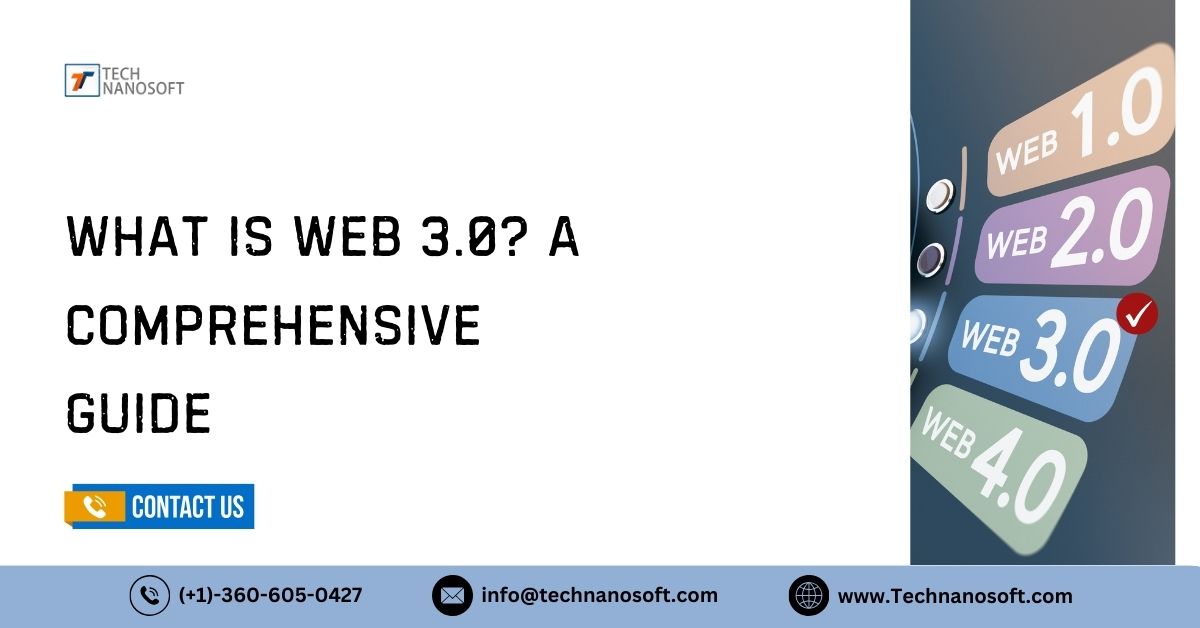
Web 3.0 is the next big step toward Internet evolution, transforming how we use computers and the Internet. Web 3.0 expands beyond the controlled platforms of Web 2.0 and supports decentralization, giving users power and improving privacy. Latest versions of internet use modern technologies like blockchain, AI, and machine learning to make the web secure, accessible, and customized for all user.
In this article, we will discuss about what is Web 3.0, looking at its main features, how it can be used, and how it will change many industries, web 3.0 definition and everyday internet use. Come with us as we figure out what the future contains for the universal web.
What is Web 3.0?
Web 3.0, formerly known as the decentralized web, is the next stage in developing the Internet. Its goal is to make the web more innovative, connected, and accessible. It uses technologies such as blockchain, AI, and machine learning to make data secure and informative, as well as strengthen user privacy.
Web 3.0 gives consumers power with distributing control and ownership of data across multiple servers and platforms, unlike Web 2.0, which is based on centralized servers and platforms. The goal of the latest version of the web is to make viewing more personalized and smooth, allowing people for directly conversation.
Why is Web 3.0 Important?
Web 3.0 is essential as it transforms the internet by prioritizing privacy, security, and user control first. Blockchain technology decentralizes data management, making people less dependent on central powers and increasing confidence and transparency. Web 3.0 makes smart agreements possible, which makes deals safe and automated without the need for intermediaries.
It also encourages companies to work together, which makes the digital experience faster. Web 3.0 also uses AI to make encounters more personalized and natural. This change gives consumers more power, keeps their data safe, and encourages new ideas. Ultimately, it contributes to the digital world becoming more democratic and valuable.

What Are The Key Features of Web 3.0 Technology?
Decentralization
Decentralization is one of the most important parts of Web 3.0. It advances power from a few centralized levels to many networks. This design improves security and privacy by eliminating single points of failure and lowering the chance of hacking. Users still hold the saved data across multiple nodes, ensuring that everything is clear and trustworthy.
By giving people, instead of companies, more power, decentralization makes the Internet more reliable and fair. It also helps people connect and conduct business with their peers without going through intermediaries, reducing costs and boosting speed. This change makes it possible for the digital world to become more open and user-centered.
Blockchain-Based
Web 3.0 uses blockchain technology to create a safe, public, and permanent record of all interactions. A public, distributed ledger records every transaction, ensuring the safety of this decentralized system and preventing data hacking by hackers.
Blockchain enables the development of smart agreements, automating transactions upon the fulfillment of specific conditions. It reduces the need for mediators and improves trust. This technology also makes the creation of decentralized applications (dApps) possible. These run on a blockchain network and are safer, more private, and more efficient than regular apps.
Trustless And Permissionless Data
Trustless and permissionless data systems are at the center of Web 3.0. They allow people to connect and conduct business without trusting a single authority. In a trustless setting, cryptographic algorithms and consensus mechanisms keep data safe and secure, so there is no need for mediators.
No-permission websites let anyone join the network, encouraging inclusion and new ideas. The blockchain records all transactions publicly, granting users greater control over their information and digital interactions.
Artificial Intelligence (AI) And Machine Learning
AI and machine learning are important parts of Web 3.0 since they provide smarter and more data-driven services that improve the user experience. These technologies analyze vast amounts of data and provide personalized content, advice, and services. It makes the internet more accessible and quicker to respond.
AI algorithms improve search results, automate duties, and make statistical analysis possible. Machine learning keeps these processes adapting and getting stronger. In Web 3.0, AI and machine learning work together with open networks to provide smarter and more effective solutions.
Connectivity And Ubiquity
Web 3.0 aims to make the internet experience smooth and global. It involves connecting various operating systems, devices, and services into a network that works well and helps data shift quickly and safely. Accessing data anytime and anywhere becomes easier with a better connection.
Ubiquity means that internet services are everywhere, built into everyday items and places. It makes the digital experience more seamless. Because of this, smart cities, IoT ecosystems, and other advanced apps may develop. Technology has grown into an essential part of daily existence.
3D Graphics
3D graphics are essential to Web 3.0 because they make digital experiences more profound and more involved. These innovative graphic technologies make it possible to create virtual and augmented reality worlds, which change how people interact with digital material. Games, virtual tours, and simulations are better with 3D graphics because they make the experiences more accurate and entertaining.
In addition, they promote the creation of metaverse apps that permit people to find and connect in a virtual world. web 3 pushes the boundaries of digital innovation by incorporating 3D graphics into visual narratives, education, and entertainment.
What is Difference Between Web 1.0, Web 2.0, and Web 3.0 Meaning?
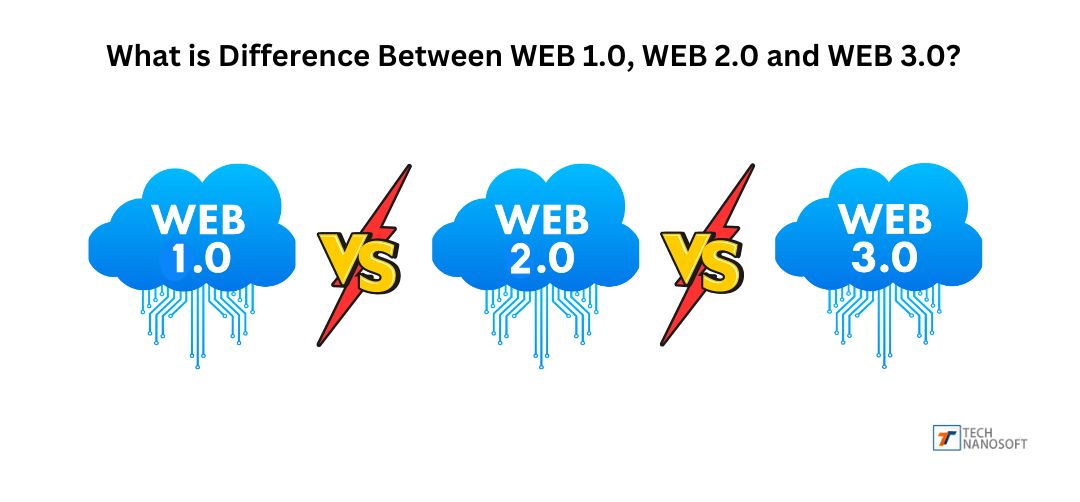
Web 1.0
1. The web is read-only and possesses static content.
2. Lack of user involvement and interaction.
3. Simple HTML pages that display information in a straight line.
4. A small amount of user-generated content.
5. Individuals or companies generally control it.
6. Global access to information without dynamic features.
7. The majority is used for reading and finding information.
Web 2.0
1. Dynamic material on an interactive web.
2. Social media sites and user-generated content.
3. Real-time interactions are possible with technologies like AJAX and JavaScript.
4. Focus on social networking, sharing content, and working combined.
5. Websites like Wikipedia, Facebook, and YouTube.
6. User empowerment through involvement and building communities.
7. Many people get information and thoughts quickly.
Web 3.0
1. Decentralized web places privacy and user power first.
2. It uses blockchain technology to make it safer.
3. There are smart contracts and decentralized apps (dApps).
4. Transactions and exchanges between peers without the need for intermediaries.
5. It makes systems to collaborate and give each customer a unique experience.
6. Integrates AI and machine learning to make interactions smarter.
7. It aims to make the digital environment more equitable and efficient.
READ ALSO- What is Sentiment Analysis with AI? Pros and Use Cases
How Does Web3 Technology Work?
Web3 technology works on decentralized networks, primarily using blockchain to keep data safe and secure. Peer-to-peer methods send data across multiple nodes, so no single control point exists. The blockchain generates smart contracts, which operate personally and make transactions more manageable and secure without the need for intermediaries.
Cryptographic algorithms keep data safe and ensure genuine transactions, while maintaining openness and confidence. Web3 also employs AI and machine learning to improve user interaction and make experiences more specialized. This decentralized design gives users more power, privacy, and a more robust digital ecosystem. It changes how we interact with the internet.
Applications and Use Cases of Web 3.0
DAOs
A critical application of Web 3.0 is DAOs, or decentralized autonomous Organizations. They use blockchain technology to allow organizations to function and manage. Members use smart contracts to ensure the process remains transparent and fair. DAOs lack a central leader; stakeholders vote on ideas and policies.
This system encourages projects managed by the community and lowers the need for intermediaries, which improves trust and efficiency. Numerous fields, including finance, social networks, and project management, utilize DAOs. It allows for democratic involvement and spreads control of operations and assets.
NFTs
The Non-Fungible Tokens, or NFTs, are unique digital assets verified by blockchain technology, a popular Web 3.0 feature. On the other hand, NFTs show ownership of unique items like digital art, music, collectibles, and virtual real estate. Each NFT possesses a unique number that serves as a replacement and authenticates the device.
NFTs allow creators to earn money from work while presenting proof of ownership and origination. This technology has transformed the buying, selling, and trading of digital goods, creating new revenue streams in industries such as art, gaming, and entertainment.
DeFi
DeFi, or decentralized finance, leverages the capabilities of Web 3.0 to create open, permissionless financial platforms. DeFi platforms use blockchain and smart contracts to offer financial services such as loans, borrowing, trading, and investing without the need for intermediaries like banks.
Through decentralized applications (dApps), users may communicate directly with these services, allowing them more access, reduced expenses, and more clarity. DeFi makes finance more open for everyone by offering users more control over their assets and financial activities. It promotes new ideas and brings everyone into the global economic environment.
dApps
Decentralized apps, or dApps, work on blockchain networks rather than centralized servers, representing an essential part of Web 3.0. These apps use intelligent agreements to perform tasks, ensuring everything is clear and safe. Numerous applications such as games, social media, supply chain management, and finance (DeFi) utilize dApps.
They offer features such as reduced downtime, resistance to censorship, and user control over data. Since dApps decentralize application infrastructure, they offer more dependable, trustless, and user-centered solutions than standard apps, which promotes new ideas in many fields.
Cross-chain Bridges
Web 3.0 depends on cross-chain bridges to enable interoperability between various blockchain networks. These bridges improve functionality and connectivity by allowing the transfer of data and resources between different blockchains. Cross-chain bridges provide the simple transfer of tokens and data between platforms, increasing the market value and popularity of decentralized apps (dApps).
They provide a more integrated and effective digital economy by helping to address the disadvantages of different blockchain ecosystems. The potential for decentralized finance (DeFi) and other blockchain-based services increased with this technology, which also helps develop multi-chain strategies.
Cryptocurrency
Cryptocurrency, a representation of virtual or digital currencies operating on decentralized blockchain networks and safeguarded by cryptography, forms the foundation of Web 3.0. Compared to conventional currencies, cryptocurrencies operate decentralizedly and provide transparent, safe, and international peer-to-peer transactions. Bitcoin, Ethereum, and many more altcoins are a few examples.
Cryptocurrencies enable applications such as decentralized finance (DeFi), non-fungible tokens (NFTs), and decentralized autonomous organizations (DAOs). They promote innovation and growth of decentralized technology in the digital economy by providing users with more financial autonomy, reduced transaction costs, and improved privacy.
Advantages and Disadvantages of Web 3.0
Advantages of Web 3.0
As Web 3.0 is decentralized, it offers many benefits, including more robust security and privacy. Increased user control over information reduces dependency on centralized authorities and decreases data breach risk. Web 3.0, using blockchain technology, provides tamper-proof transactions and smart contracts while fostering transparency and trust. It also promotes innovation by enabling the development of new business models and decentralized applications (dApps).
AI and machine learning collectively deliver intelligent, personalized user experiences, while interoperability allows different blockchain networks to interact without difficulty, increasing functionality and connectivity.
Disadvantages of Web 3.0
Web 3.0 features numerous drawbacks. The complexity of blockchain technology can prove challenging for the general public to adopt because it requires excellent technical expertise. Scalability problems with decentralized networks may also result in a reduced flow of transactions and increased expenses. Concerns about regulatory uncertainty develop as governments attempt to control and monitor decentralized systems.
Furthermore, the transition to a decentralized web could disrupt current business models, causing resistance from established entities. Finally, the increasing emphasis on data privacy may limit the availability of free services that make money based on user data monetization.
How Can Technanosoft Assist You in Transitioning To a Web 3.0 Business?
Technanosoft assist you in managing a transition to a web3 companies, utilizing its decentralized solutions and understanding blockchain technology. Our specialized blockchain development services help you create scalable, transparent, and safe systems. Our team specializes in developing smart contracts that automate and optimize business processes, reduce costs, and raise productivity.
Additionally, our team creates decentralized apps (dApps) specifically for your industry, offering creative and user-focused solutions. In addition, Technanosoft uses machine learning and AI to provide tailored experiences and valuable insights. Our all-encompassing approach guarantees a seamless transition, enabling your company to prosper on the decentralized web.
FAQs About Web 3.0 Technology
Q.1- Is Web 3.0 the same as the Metaverse?
A- Despite their similarities, Web 3.0 meaning and the metaverse are different. The term Web 3.0 describes the next internet iteration , which strongly emphasizes user control, blockchain technology, and decentralization. It aims to generate an online experience that is more private, linked, and safe.
In contrast, consumers can interact with electronic environments and each other within the virtual reality space of the metaverse. Web 3.0 offers the technology framework for secure and decentralized virtual interactions; conversely, the metaverse concentrates on building interactive, immersive digital environments.
Q.2- Who created Web 3.0?
A- Web 3.0 is not the product of a single person or organization, but rather the result of group work. Gavin Wood, a founding partner of Ethereum, popularized the phrase by promoting the idea of a user-centric, decentralized internet. Developers, technologists, and blockchain enthusiasts have developed and evolved Web 3.0.
This partnership includes decentralized applications, blockchain technology, and artificial intelligence developments. web3 meaning is an international and decentralized project that many organizations have improved.
Q.3- What is Web 3.0 used for?
A- Web 3.0 enables a decentralized internet that enhances security, privacy, and u ser control. It makes use of blockchain technology to provide secure and transparent transactions, allowing for the use of non-fungible tokens (NFTs), decentralized autonomous organizations (DAOs), and decentralized financing (DeFi).
Web 3.0 also supports smart contracts, which automate and secure agreements without intermediaries. It also integrates machine learning and artificial intelligence to provide intelligent and customized user experiences. The overall goal of web 3 is to create a more equal digital environment that empowers people and promotes innovation in various sectors.
Q.4- What are Web 3.0 crypto coins?
A- Digital currencies, such as Web 3.0 crypto coins, power the decentralized web's applications and infrastructure. These coins allow decentralized apps (dApps) to speed up transactions and reward network activity. Polkadot (DOT) enables cross-chain interoperability, while Ethereum (ETH) powers smart contracts and decentralized applications.
Other notable web 3 coins are Filecoin (FIL), which facilitates decentralized storage, and Chainlink (LINK), which offers decentralized oracles. These cryptocurrencies are essential to Web 3.0's services and functionality, propelling its uptake and expansion.

